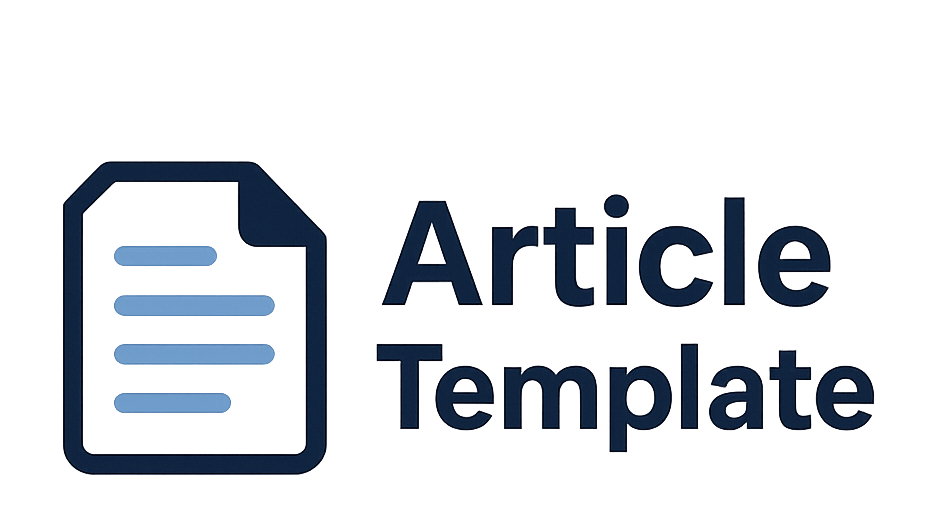Pemanfaatan Artificial Intelligence (AI) untuk Kustomisasi Buku Gambar Panel dan Elemen Dekoratif Keramik
DOI:
https://doi.org/10.55382/jurnalpustakaai.v5i1.904Kata Kunci:
Artificial Intelligence, Desain Panel, Keramik, Kustomisasi, Generative Design, Seni DigitalAbstrak
Kemajuan teknologi Artificial Intelligence (AI) telah membuka peluang baru dalam bidang seni dan desain, termasuk dalam pengembangan buku gambar panel dan elemen dekoratif berbasis keramik. Penelitian ini mengeksplorasi pemanfaatan AI sebagai alat bantu dalam proses kustomisasi desain, dengan fokus pada penerjemahan karakteristik visual dan tekstural keramik ke dalam format panel ilustratif. Melalui pendekatan berbasis machine learning dan generative design, AI mampu menganalisis motif, bentuk, warna, dan tekstur khas dari keramik tradisional untuk kemudian menghasilkan desain yang unik dan personal. Kustomisasi ini mewujudkan penciptaan buku gambar panel yang tidak hanya estetis tetapi juga memiliki kedekatan dengan preferensi pengguna maupun budaya tertentu. Hasil kajian menunjukkan bahwa penggunaan AI dalam konteks ini mempercepat proses desain, memperluas gambaran visual, dan meningkatkan relevansi karya terhadap audiens modern. Namun, integrasi teknologi juga memunculkan tantangan etis dan artistik yang perlu direspon dengan pendekatan kolaboratif antara seniman, desainer, dan teknologi.
Unduhan
Referensi
Bainomugisha, E., Ssematimba, J., Okedi, D., Nsubuga, A., Banda, M., Settala, G. W., & Lubisia, G. (2023). AirQo sensor kit: A particulate matter air quality sensing kit custom designed for low-resource settings. HardwareX, 16(May), e00482. https://doi.org/10.1016/j.ohx.2023.e00482
Cahyaningrum, Y. (2023). Penerapan Artificial Intelligence Dalam Dunia Pendidikan. Amplifier, 13(2), 62–68. https://stuvia.id/tips-belajar/artificial-intelligence-dalam-pendidikan/.
Cahyaningrum, Y., Asif, M., Ihsan, A., & Rezki, Z. (2025). Sustainability and Ethics in Information Systems. 4(1), 13–21.
Cahyaningrum, Y., Kinanthi, S., Magfiroh, A., & Eka, D. (2024). Blending Cultural Heritage with Digital Design?: A New Era in Pottery Motifs and Art. 88–99.
Cahyaningrum, Y., Neysa, A. C., Kriya, P. S., Indonesia, T., & Korespondesi, P. (2025). Integrasi Seni Tradisional dan Teknologi Modern dalam Pengembangan Sistem Informasi Integration. 4(1), 13–22.
Cahyaningrum, Y., Prasetyo, I. A., & Abdullah, M. (2024). The Impact of Applied Informatics and Digitalization of Traditional Arts. 5(December), 87–94.
Criado-Boado, F., Martínez, L. M., Blanco, M. J., Alonso-Pablos, D., Porto, Y., & Barrio-Álvarez, E. del. (2023). Gazed pottery: An archaeometric-cognitive approach to material culture visuality essential title page information. Journal of Archaeological Science, 154(March). https://doi.org/10.1016/j.jas.2023.105770.
Dananjaya, S. A. V., Chevali, V. S., Dear, J. P., Potluri, P., & Abeykoon, C. (2024). 3D printing of biodegradable polymers and their composites – Current state-of-the-art, properties, applications, and machine learning for potential future applications. Progress in Materials Science, 146(March), 101336. https://doi.org/10.1016/j.pmatsci.2024.101336.
Gaspar, F., Carreira, D., Rodrigues, N., Miragaia, R., Ribeiro, J., Costa, P., & Pereira, A. (2025). Synthetic image generation for effective deep learning model training for ceramic industry applications. Engineering Applications of Artificial Intelligence, 143(February 2024), 110019. https://doi.org/10.1016/j.engappai.2025.110019.
Gyawali, B., Haghnazar, R., Akula, P., Alba, K., & Nasir, V. (2024). A review on 3D printing with clay and sawdust/natural fibers: Printability, rheology, properties, and applications. Results in Engineering, 24(October), 103024. https://doi.org/10.1016/j.rineng.2024.103024.
Hofbauer, P. J. (2024). Virtual development of competitive products made of customized ceramic composites. Materials and Design, 238(December 2023), 112660. https://doi.org/10.1016/j.matdes.2024.112660.
Karthika Devi, M. S., Fathima, S., & Baskaran, R. (2020). CBCS - Comic book cover Synopsis: Generating synopsis of a comic book with unsupervised abstractive dialogue. Procedia Computer Science, 172, 701–708. https://doi.org/10.1016/j.procs.2020.05.100.
Reaney, I. M., Walsh, B., & Vilarinho, P. M. (2023). Resource efficiency and energy efficiency (REEE) in the Portuguese ceramic industry: Towards net zero carbon production. Open Ceramics, 15(February), 100390. https://doi.org/10.1016/j.oceram.2023.100390.
Rüssel, C., & Wisniewski, W. (2025). Progress in Materials Science Glass-ceramic engineering?: tailoring the microstructure and properties. 152(December 2023).
Scheithauer, U., Holtzhausen, S., & Wiemer, H. (2024). Additive Manufacturing of Ceramics opens the door to Components for Biomanufacturing Applications with high Functionality. Procedia CIRP, 125, 284–289. https://doi.org/10.1016/j.procir.2024.08.048.
Taiwo, R., Bello, I. T., Abdulai, S. F., Yussif, A. M., Salami, B. A., Saka, A., Ben Seghier, M. E. A., & Zayed, T. (2025). Generative artificial intelligence in construction: A Delphi approach, framework, and case study. Alexandria Engineering Journal, 116(January), 672–698. https://doi.org/10.1016/j.aej.2024.12.079.
##submission.downloads##
Diterbitkan
Cara Mengutip
Terbitan
Bagian
Lisensi
Hak Cipta (c) 2025 Jurnal Pustaka AI (Pusat Akses Kajian Teknologi Artificial Intelligence)

Artikel ini berlisensi Creative Commons Attribution 4.0 International License.







